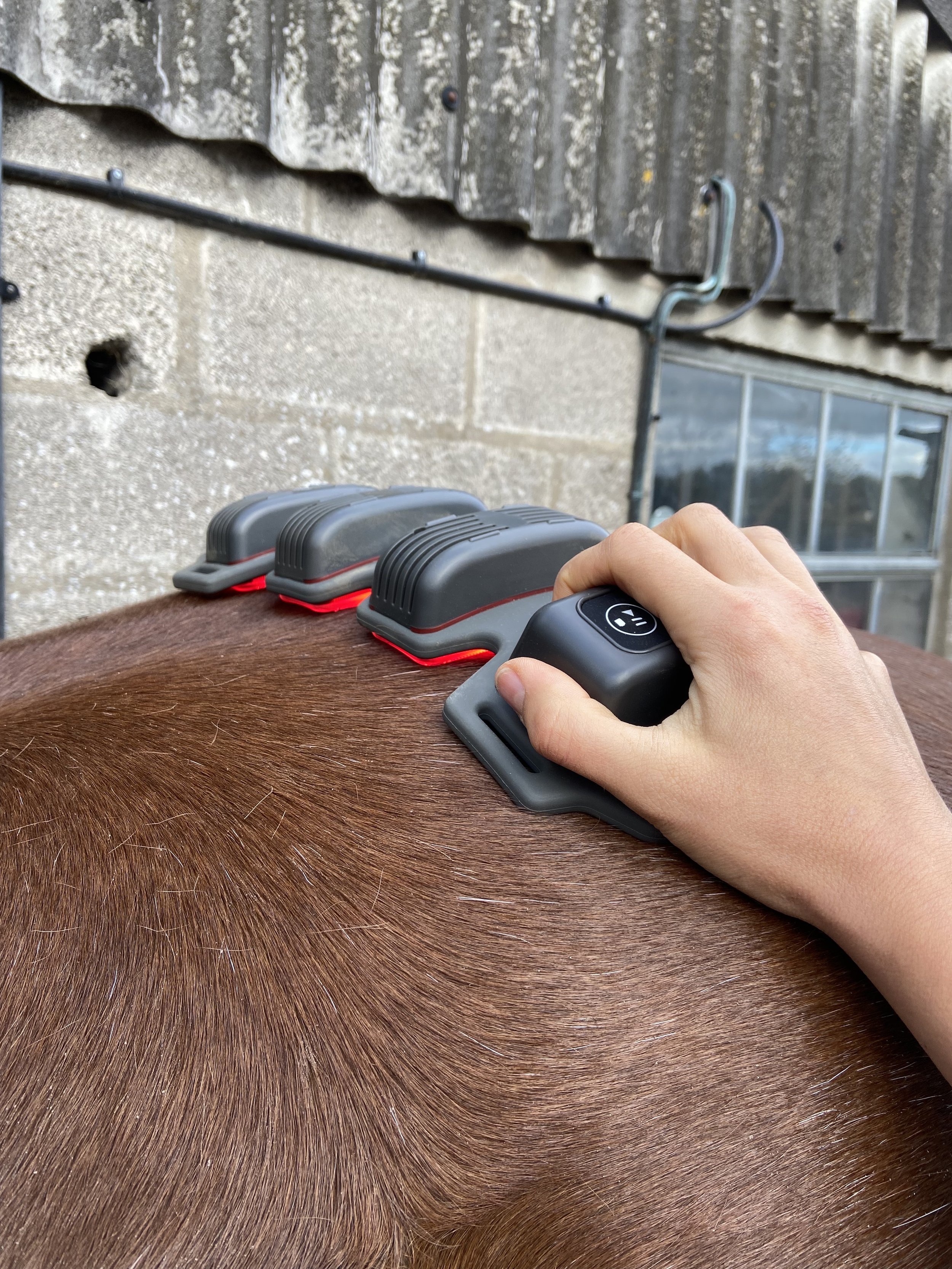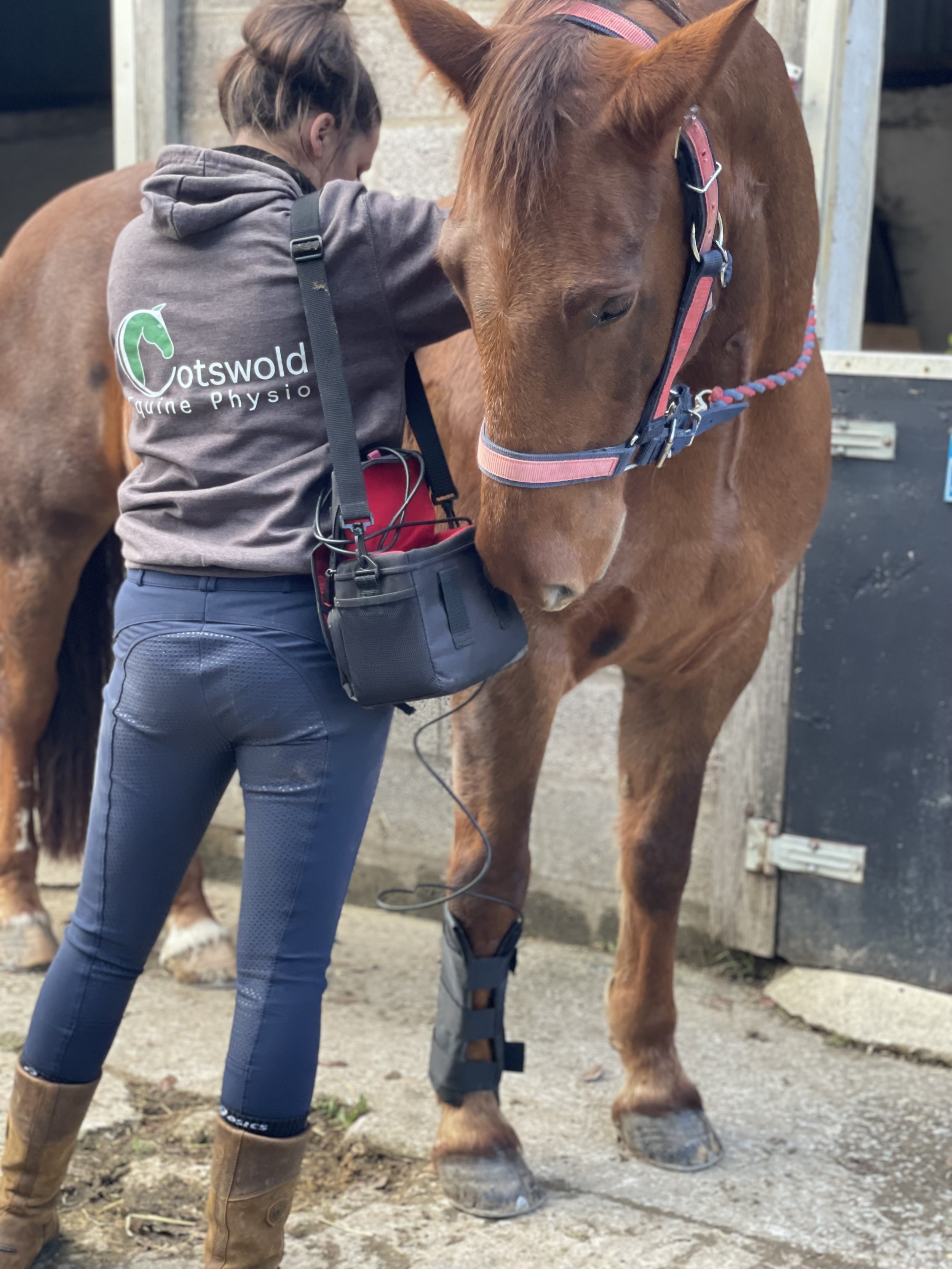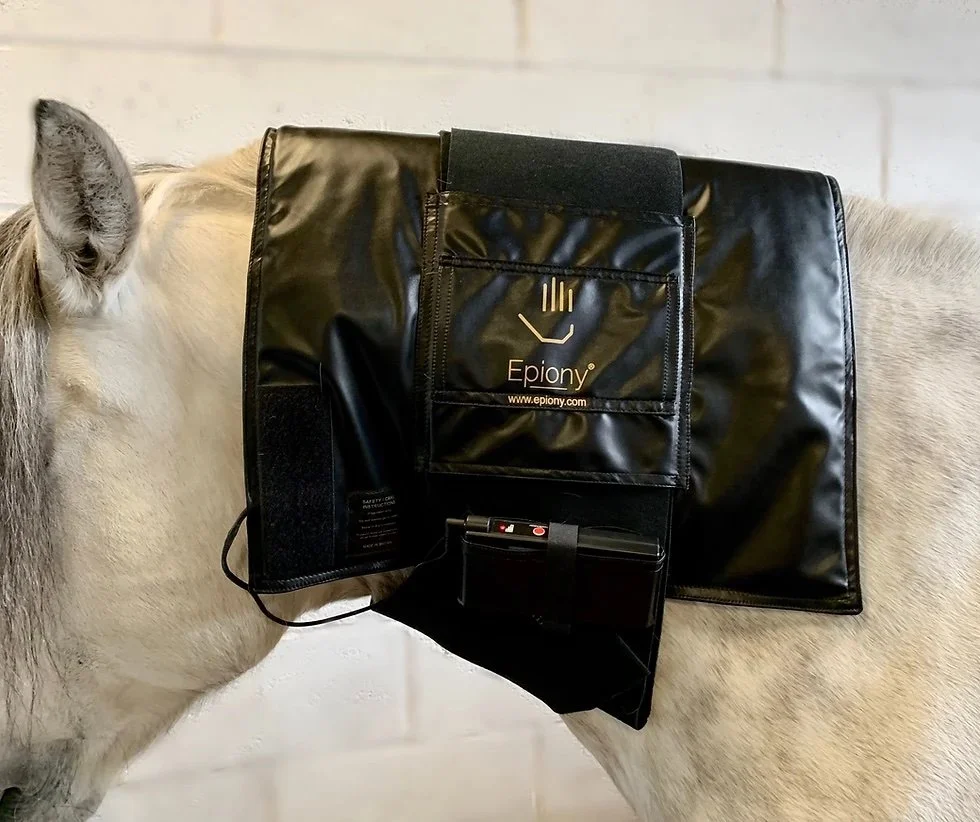
SerVICes we provide
Electrotherapy
TherapEutic Ultrasound
Therapeutic ultrasound is a non-invasive treatment modality used to promote healing and alleviate pain in animals. It utilizes high-frequency sound waves to penetrate deep into tissues, stimulating cellular activity and promoting various therapeutic effects.
One of the key benefits of therapeutic ultrasound is its ability to increase blood flow to the treated area, which in turn delivers essential nutrients and oxygen to accelerate the healing process. This increased circulation also helps to remove metabolic waste and reduce inflammation, contributing to pain relief and tissue repair.
Therapeutic ultrasound can be particularly effective in treating musculoskeletal conditions such as muscle strains, tendon injuries, and arthritis in animals. It can also aid in the management of chronic conditions and post-operative rehabilitation.
During a therapeutic ultrasound session, Chloe will apply a gel to the treatment area and move a handheld ultrasound probe over the skin. The probe emits sound waves that penetrate the tissues, generating gentle heat and promoting cellular activity without causing discomfort to the animal.
Overall, therapeutic ultrasound is a safe and effective treatment option for animals experiencing pain or recovering from injuries.
RED Light Therapy
Red light therapy, also known as low-level laser therapy (LLLT), is a non-invasive treatment method that utilises specific wavelengths of red and near-infrared light to promote healing and reduce pain in animals. This therapy harnesses the power of light energy to stimulate cellular activity and enhance various biological processes within the body.
Red light therapy can be beneficial for a wide range of conditions in animals, including musculoskeletal injuries, wound healing, arthritis, and neurological disorders. It is also commonly used in post-operative care to enhance recovery and reduce pain and inflammation.
During a red light therapy session, the affected area of the animal's body is exposed to the therapeutic light for a specified duration. This can be done using handheld devices, light panels, or specialised therapy beds, depending on the size and needs of the animal.
One of the key advantages of red light therapy is its non-invasive nature and lack of known side effects when administered properly. It can be used as a standalone treatment or in combination with other modalities, such as physiotherapy or medications, to enhance overall therapeutic outcomes.
Overall, red light therapy is a safe and effective treatment option for animals experiencing pain, inflammation, or impaired healing.
Pulsed Electromagnetic Field therapy
Pulsed Electromagnetic Field Therapy (PEMFT), is a non-invasive treatment method used to promote healing and alleviate pain in. It utilises electromagnetic fields to deliver pulsed energy to tissues at specific frequencies and intensities, stimulating cellular activity and enhancing various biological processes within the body.
PEMF therapy has been shown to have a range of therapeutic effects, including reducing inflammation, improving blood circulation, accelerating tissue repair, and relieving pain. It can be particularly beneficial for animals recovering from musculoskeletal injuries, undergoing post-operative rehabilitation, or managing chronic conditions such as arthritis.
One of the key advantages of PEMF therapy is its ability to target specific areas of the body and deliver therapeutic energy directly to the affected tissues. This targeted approach minimises potential side effects and maximises the effectiveness of the treatment.
PEMF therapy is typically well-tolerated by animals and can be used as a standalone treatment or in combination with other modalities, such as physiotherapy or medications, to enhance overall therapeutic outcomes.
Overall, PEMF therapy is a safe and effective treatment option for animals experiencing pain, inflammation, or impaired healing.
Laser - Class 3B
Class 3B laser therapy, also known as low-level laser therapy (LLLT) or cold laser therapy, is a therapeutic technique used in veterinary medicine to promote healing, reduce pain, and improve tissue repair. Class 3B lasers emit low-level laser light at specific wavelengths, typically in the red or near-infrared spectrum, which penetrates deep into the tissues without generating heat.
Unlike higher-power lasers used for surgical procedures, Class 3B lasers deliver lower levels of energy, making them safe and non-invasive for therapeutic applications. Despite their lower power, Class 3B lasers still provide significant therapeutic effects on a cellular level, stimulating various physiological processes within the body.
The benefits of Class 3B laser therapy include:
Enhanced Cellular Metabolism; Improved Blood Circulation; Pain Reduction; Anti-Inflammatory Effects; Accelerated Healing
Class 3B laser therapy is used to treat a wide range of conditions in animals, including musculoskeletal injuries, arthritis, soft tissue injuries, and post-operative recovery. It is typically administered by trained veterinary professionals in a clinical setting and can be used as a standalone treatment or in combination with other modalities to enhance therapeutic outcomes.
Overall, Class 3B laser therapy offers significant benefits for improving the health and well-being of animals, providing a safe, non-invasive, and effective treatment option for a variety of conditions. When used appropriately, Class 3B laser therapy can help animals recover more quickly, reduce pain, and enhance their quality of life.
TENS & Muscle stim
Transcutaneous Electrical Nerve Stimulation (TENS) and muscle stimulation are therapeutic modalities used in veterinary medicine to manage pain, improve muscle function, and promote healing.
TENS Machine (Transcutaneous Electrical Nerve Stimulation): TENS machines deliver low-voltage electrical currents through electrodes placed on the skin, targeting specific nerve pathways to relieve pain. These electrical impulses disrupt pain signals sent to the brain, providing temporary pain relief. TENS therapy also stimulates the release of endorphins, the body's natural painkillers, further reducing discomfort. In veterinary medicine, TENS therapy is used to manage acute and chronic pain conditions such as arthritis, muscle strains, and nerve-related pain. It is non-invasive, safe, and can be used as a standalone treatment or in conjunction with other modalities.
Muscle Stimulation: Muscle stimulation, also known as neuromuscular electrical stimulation (NMES) or electrical muscle stimulation (EMS), involves the application of electrical currents to stimulate muscle contractions. These contractions help to strengthen muscles, improve circulation, and prevent muscle atrophy. Muscle stimulation is often used in veterinary rehabilitation programs to aid in the recovery from injuries, surgeries, or neurological conditions. It can also be beneficial for animals with muscle weakness or disuse atrophy. Muscle stimulation is typically administered using specialized devices with electrodes placed on or near the target muscles. The intensity and frequency of the electrical impulses are adjusted based on the animal's individual needs and response.
Both TENS therapy and muscle stimulation are safe and well-tolerated by animals when administered by trained veterinary professionals. They can provide effective pain relief, improve muscle function, and enhance overall well-being for animals undergoing rehabilitation or managing chronic conditions. As with any therapeutic modality, it's important for TENS and muscle stimulation treatments to be tailored to the specific needs of the animal and monitored closely for optimal outcomes.
Heat Therapy
Chloe, a dedicated practitioner in veterinary physiotherapy, has recently incorporated an Eponym Heat pad into her practice to enhance the care of her patients. These innovative heat pads play a crucial role in aiding:
Pain Relief: By gently warming muscles and joints, heat pads assist in easing discomfort stemming from muscle tension, arthritis, or injuries, offering much-needed relief to furry companions.
Improved Circulation: The therapeutic warmth of heat therapy encourages enhanced blood flow to targeted areas, facilitating the delivery of vital oxygen and nutrients crucial for tissue repair and expediting the body's natural healing processes.
Muscle Relaxation: With their comforting warmth, heat pads effectively alleviate muscle spasms and cramps, promoting deep relaxation and boosting flexibility, ensuring pets can move more comfortably and freely.
Stress Reduction: Beyond physical benefits, heat therapy fosters a sense of calmness in pets, soothing the nervous system and alleviating stress, anxiety, and tension both in their muscles and minds.
Incorporating heat pads into her practice, Chloe leverages their multifaceted benefits to provide comprehensive care that prioritizes relaxation, pain relief, and accelerated healing for her beloved animal patients.






